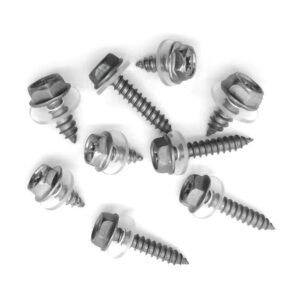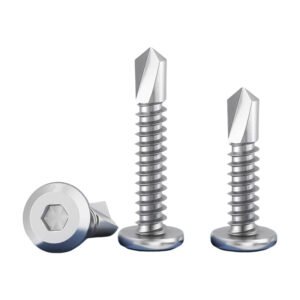

Key Points
-
- Research suggests zinc electroplating and zinc-nickel plating protect metals from corrosion, with zinc plating being cost-effective for general use and zinc-nickel offering superior durability in harsh environments.
-
- It seems likely that zinc plating provides up to 500 hours of corrosion protection in salt spray tests, extendable to 700 hours with additional coatings, while zinc-nickel can last up to 500 hours, ideal for automotive and marine applications.
-
- The evidence leans toward modern processes being more environmentally friendly, using trivalent chromium to meet regulations like RoHS, addressing customer concerns about sustainability.
-
- Customers may find it unexpected that the electroplating market is projected to grow at a 4.1% CAGR from 2023 to 2031, reaching US$ 22.8 billion, driven by demand for eco-friendly and high-performance coatings.
Introduction and Background
Zinc electroplating, commonly referred to as zinc plating, is a critical surface treatment process used to protect metal substrates, primarily steel, from corrosion. The process involves depositing a thin layer of zinc onto the metal surface through an electrochemical reaction, enhancing both durability and aesthetics. Zinc-nickel plating, an alloy variant, incorporates nickel (typically 10-15%) to offer superior corrosion resistance, particularly in demanding environments. This report, based on current knowledge as of March 16, 2025, addresses customer concerns such as cost, environmental impact, longevity, and maintenance, drawing from recent industry trends and technical specifications.
The analysis is informed by a comprehensive review of online resources, focusing on the top search results for keywords like “zinc electroplating,” “zinc plating,” and “zink-nickel-beschichtung.” The findings aim to provide a detailed understanding for customers, ensuring decisions align with practical needs and regulatory compliance.
Process Overview
Zinc electroplating begins with surface preparation, where the metal is cleaned using alkaline detergents to remove oils and treated with acid to eliminate rust or scales. The cleaned part is then immersed in an electrolyte solution containing zinc ions, and a direct current is applied, causing zinc to deposit onto the cathode (the part being plated). Post-treatments, such as passivation with chromate conversion coatings, enhance corrosion resistance and appearance.
Zinc-nickel plating follows a similar process but uses a solution containing both zinc and nickel, resulting in an alloy deposit. According to Electrogalvanization – Wikipedia, this method has evolved significantly, with modern developments including alkaline, cyanide-free zinc and acid chloride baths improving brightness and performance.
Benefits and Applications
Zinc plating offers several advantages, including:
-
- Corrosion Protection: Acts as a sacrificial anode, corroding before the base metal, with a corrosion rate at least 10 times slower than steel, as noted by Unbrako: Zinc Electroplating.
-
- Cost-Effectiveness: Lower material and process costs make it suitable for large-scale applications like fasteners and construction hardware.
-
- Aesthetics: Provides a bright, smooth finish, often enhanced with dyes for decorative purposes.
Zinc-nickel plating, on the other hand, is designed for harsher environments. It offers:
-
- Enhanced Corrosion Resistance: Can withstand up to 500 hours in neutral salt spray tests (ASTM B117), compared to 120 hours for zinc plating, as per Metal Finishings Ltd: Electroplating: Zinc vs Zinc-Nickel.
-
- High-Temperature Performance: Suitable for temperatures up to 120°C (248°F), ideal for automotive engine components and marine hardware.
-
- Reduced Galvanic Corrosion: Minimizes corrosion when in contact with other metals like aluminum, crucial for mixed-metal assemblies.
Applications include automotive parts (e.g., brake calipers), aerospace fasteners, and marine equipment, reflecting its versatility in industries requiring robust protection.
Comparative Analysis: Zinc vs. Zinc-Nickel Plating
To aid customer decision-making, the following table compares key attributes:
| Attribute | Zinc Plating | Zinc-Nickel Plating |
|---|---|---|
| Corrosion Protection | Up to 120 hours in salt spray tests | Up to 500 hours in salt spray tests |
| Cost | Lower, cost-effective for general use | Higher, but long-term savings possible |
| Temperature Resistance | Limited, not suitable above 500°F (260°C) | Suitable up to 120°C (248°F) |
| Environmental Impact | Moving to eco-friendly processes, RoHS compliant | Similarly eco-friendly, often preferred for sustainability |
| Applications | Fasteners, light outdoor use | Automotive, aerospace, marine environments |
This comparison highlights that while zinc plating is economical for less demanding applications, zinc-nickel is preferable for harsh conditions, aligning with customer needs for durability and compliance.
Environmental and Regulatory Considerations
Environmental concerns have driven significant changes in plating processes. Traditional methods using hexavalent chromium (CrVI) are being phased out due to toxicity, with modern alternatives like trivalent chromium gaining traction. According to Electrogalvanization – Wikipedia, recent EU directives (ELV/RoHS/WEEE) prohibit CrVI, leading to increased use of alkaline zinc and zinc alloys with high-performance trivalent passivates.
Customers should ensure platers comply with regulations like RoHS, which restricts substances like lead and cadmium. Waste management is also critical, with proper disposal of plating solutions reducing environmental impact. The industry trend, as noted in Electroplating Market Forecast, shows a 4.1% CAGR from 2023 to 2031, reaching US$ 22.8 billion, driven by demand for eco-friendly and efficient coatings.
Cost and Longevity
Cost is a primary customer concern, with zinc plating being more affordable due to lower material costs and simpler processes. Zinc-nickel, while initially more expensive, offers long-term savings through extended lifespan, particularly in corrosive environments. Longevity depends on coating thickness and environmental exposure:
-
- Alkaline non-cyanide zinc plating can provide up to 500 hours of corrosion protection with chromate conversion coatings, extending to 700 hours with passivates and topcoats, as detailed in Products Finishing: Zinc Electroplating.
-
- Thickness uniformity is crucial, with alkaline processes offering better distribution compared to chloride zinc, which may suffer from “dogboning” (uneven buildup in high current density areas).
Regular maintenance, such as cleaning with mild detergents and avoiding abrasive contact, can extend the life of plated parts, addressing customer concerns about durability.
Maintenance and Care
Maintenance is essential for maximizing the lifespan of plated components:
-
- Cleaning: Use mild detergents to remove dirt, avoiding abrasive cleaners that can damage the coating.
-
- Inspection: Regularly check for signs of corrosion, especially in areas exposed to salt water or high humidity.
-
- Avoid Harsh Chemicals: Steer clear of strong acids or alkalis, which can compromise the plating integrity.
These practices ensure plated parts remain functional and aesthetically pleasing, aligning with customer expectations for long-term performance.
Latest Advancements and Market Trends
As of March 2025, the electroplating industry is witnessing advancements that address customer needs:
-
- Alkaline Zinc Plating: Known for superior corrosion resistance, strong adhesion, and cost-effectiveness, it is widely used in automotive, electronics, and construction, as per Optimal Protection with Alkaline Zinc Plating | Sinar Cemaramas Abadi.
-
- Eco-Friendly Processes: The shift to non-toxic, high-efficiency methods, such as trivalent passivates, reflects industry efforts to meet sustainability goals.
-
- Market Growth: The electroplating market, including zinc applications, is projected to grow at a 4.1% CAGR from 2023 to 2031, reaching US$ 22.8 billion, driven by automotive and electronics sectors Electroplating Market Forecast.
These trends suggest customers can expect continued improvements in plating quality and environmental performance, potentially influencing future purchasing decisions.
Conclusion
Zinc electroplating and zinc-nickel plating are essential for protecting metal surfaces, with zinc plating offering cost-effective solutions for general use and zinc-nickel providing superior protection for harsh environments. Customers should consider factors like application, environmental exposure, and budget, ensuring compliance with regulations and sustainability goals. This detailed analysis, based on current industry insights, equips customers to make informed choices, enhancing the durability and performance of their metal components.
Key Citations


